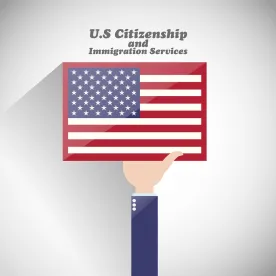The Office of Management and Budget’s (OMB) Office of Information and Regulatory Affairs (OIRA) completed its review of United State Citizenship and Immigration Services’ (USCIS) proposed regulations to update the Immigrant Investor Program known as EB-5. USCIS first published its proposed rules, titled EB-5 Immigrant Investor Program Modernization or RIN 1615-AC07 (EB-5 Modernization Regulation), in the Federal Register in January 2017. On February 22, 2019, after waiting more than two years for Congress to enact updates to the EB-5 Program, USCIS submitted its own EB-5 Modernization Regulation to OMB for review.
OMB review is typically the final stage of the rulemaking process prior to publication of the final rule in the Federal Register. The OMB can approve the proposed final rule immediately, initiate a review for up to 120 days, or negotiate revisions to the text of the drafts it receives. In connection with the EB-5 Modernization Regulation, on June 27, 2019, OMB returned the rule to USCIS “consistent with change.”1 In effect, OIRA generally agreed with the intent of the USCIS’ draft regulation but made substantive changes.
What happens next? Regarding the next steps, USCIS is expected to publish the EB-5 Modernization Regulation in the Federal Register very soon. Procedural mandates require that the final rule is published in the Federal Register at least 30 days before the rule’s specified effective date. More significant regulations require at least 60 days. Ostensibly, the EB-5 Modernization Regulation that affects investors’ lives makes it a significant regulation but this is not certain. Until publication, the EB-5 program will continue to follow existing rules.
Effect on the EB-5 Program. As previously reported by Polsinelli, if finalized substantially as proposed by USCIS, the EB-5 Modernization Regulation would (in pertinent part):
-
Increase the minimum investment amounts significantly from $1 million to $1.8 million (or $1.35 million for investments in Targeted Employment Areas (TEA) an increase from $500,000);
-
Transfer TEA designation authority from state economic development agencies to the Department of Homeland Security (DHS);
-
Create priority date retention for EB-5 investors to use the priority date of a previously approved I-526 Petition for any subsequently filed I-526 Petition under certain circumstances;
-
Establish more oversight over regional centers, etc.
Stakeholders (investors, developers, regional center owners, etc.) of the EB-5 program have watched the progress of EB-5 Modernization Regulation carefully. The first two bullets above have generated the most concern among EB-5 program stakeholders; the increased investment amount could create extra procedural burdens associated with demonstrating lawful sourcing of funds and increased difficulty and expenses associated with currency exchanges and wire transfers from resident countries. Regarding future viability of the EB-5 program, the increased investment amount may cause foreign investors to look to the immigrant investor programs in other countries with a lower investment amount than the United States (i.e., Antigua, Australia, Austria, Bulgaria, Canada, Cyprus, Hong Kong, Latvia, Malta, Monaco, Portugal, Saint Lucia, Singapore, Spain, United Kingdom, Ukraine, etc.)2.
With regards to developers and regional centers that are presently fundraising around the globe, their offering documents (i.e., business plan, private placement memorandum, subscription agreement, partnership agreement, etc.) may require amendment to address applicable changes once publication in the Federal Register occurs, unless of course (i) the offering can be concluded within the 30- or 60-day period from publication, or (ii) the final EB-5 Modernization Regulation grants a phase-in for active projects allowing such offerings to be completed before the effective date of the new provisions. Regarding regional centers and developers with projects in the pipeline, it may be wise to await the publication to assess the changes and the continued viability of the EB-5 program and TEA applicability to the underlying project, before proceeding. With regards to investors who are considering participating in the EB-5 Program, they would do well to invest and file their I-526 Petition as soon as possible to be grandfathered under the current rules.
What will the final EB-5 Modernization Regulation look like? What changes OIRA made to the EB-5 Modernization Regulations are yet unknown. The OMB meeting site reveals that OIRA held four meetings in 2019 (three in March and one in May) to hear testimony from persons opposed to the EB-5 regulation.3 Accordingly, EB-5 program stakeholders have reason to hope that the EB-5 Modernization Regulation implements a more moderate approach to reform with smaller minimum investment amounts initially (or that are phased in over time) and reasonable processes for TEA determination for example.
1 https://www.reginfo.gov/public/do/eoDetails?rrid=128858
2 https://www.eb5investors.com/eb5-basics/international-immigrant-investor-programs
3 https://www.reginfo.gov/public/do/eom12866SearchResults




 />i
/>i
